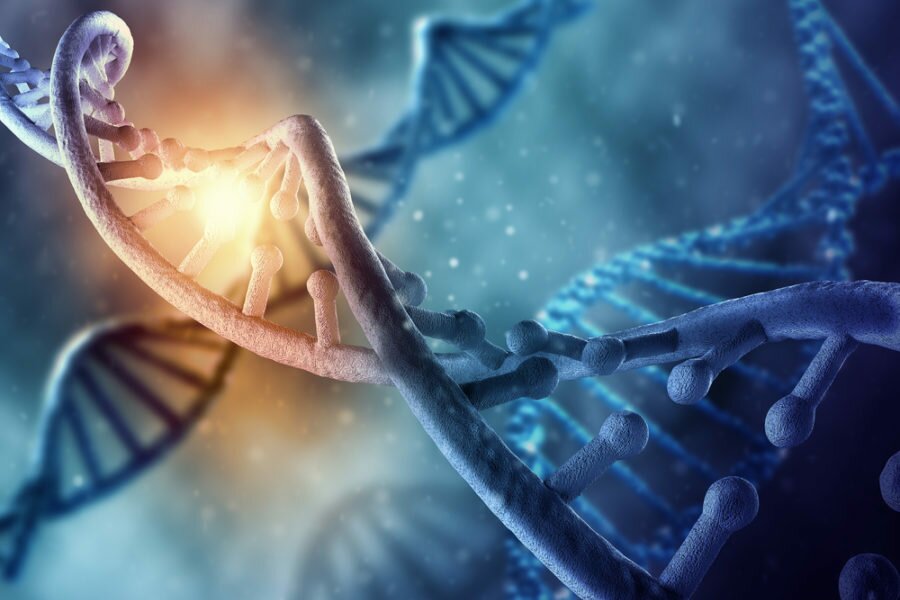DNA is such a fascinating thing. Aside from scientists, not many people do a lot of introspective thinking into the different parts of our bodies, and aside from knowing that DNA is something that we all have, not many people know exactly what it is. DNA is incredible because even though it is unique to us, it can be used to tell us so much about ourselves and also our history. In recent years, home DNA kits have become increasingly popular, as companies such as Ancestry and My Heritage have allowed you to complete a simple test which allows you to trace your ancestors and even get a breakdown of your ethnicity.
It is through this ethnicity breakdown that you might notice a surprising result in your ethnicity. You might unknowingly be 1% Welsh, or 1% Chinese, and have no idea how that percentage has entered your bloodline because as far as you were aware your family all came from Ireland. So if you’ve completed a DNA kit with one of these companies, and have ended up with a rogue result that has left you confused, you are in the right place. In this guide, we’ll be looking at all the information you need to know about percentages in your ethnicity estimate, and answering the question ‘How Many Generations Back is 1%?’.

Let’s Talk About DNA
Before we talk about genetic percentages, let’s first take a deeper look at DNA. As we’ve already mentioned, DNA is something that most people will only have a very basic knowledge of. But to understand genetic percentages, we will have to expand on this knowledge. DNA stands for deoxyribonucleic acid and is formed of two chains coiled together to form a double helix shape. These two coiled chains carry all the genetic instructions that your body needs to send out to the cells to reproduce, grow, and develop.
Both of these chains are full of molecules that together carry the necessary instructions to keep our bodies alive. These chains are constructed of 4 different blocks: adenine, cytosine, guanine, and thymine. Or as they are better known A, C, G, and T. These blocks together are strung together in a way to form a genetic code that is unique to you. This unique DNA chain can be found in almost every single cell in the human body, and every human body is constructed of over 37 trillion cells. This is why the identification of DNA as part of crime scene investigation was so groundbreaking as it provided a new way to identify criminals and tie them to the crime scene. As everyone’s DNA is unique to them, there’s no way that you can argue against DNA evidence, making it a game-changer for the police and criminal investigations.
Due to there being such an emphasis on your DNA being unique to you, you might be confused at how your DNA can be used to connect you to your ancestors. This is done through a process known as DNA sequencing. Your DNA sample is inputted to a computer and analyzed to provide a long sequence of the letters, ‘A, C, G, and T’. These codes can then be analyzed and compared against other chains of DNA in the system to look for similarities that prove a genetic connection between the two. With that in mind, let’s take a deeper look at how DNA can be used to track your ancestry.
Using DNA to track Ancestry
Using DNA to trace your ancestry is a practice that has become popular thanks to companies like Ancestry, who offer a combined service of DNA testing and family tree creation. These companies have 2 huge databases, one which is full of records that can be used to trace your heritage manually, and another which contains lots of different chains of DNAs. The main focus of these DNA tests is to provide you with an ethnicity estimate which can be really interesting and can also be a massive help when you are trying to research your family history.
Your DNA ethnicity estimate can help you find out which databases you should be looking for information on, and can also connect you to other relatives who have completed the DNA test. Most companies have a universal system and allow you to compute your unique DNA code into multiple databases without paying to have another DNA test. By doing this, you have an increased chance of finding relatives through your DNA as you will have access to anyone who has ever completed a DNA test through a commercial DNA testing company. So with that in mind, let’s take a deeper look at your ethnicity estimate, and how far back 1% is in your family line.

How Many Generations Back is 1%?
If you are completing research into your family tree, and you want to understand how many generations back 1% is, it is likely because you have come across a rogue DNA result. There are two main reasons why someone would complete an ethnicity DNA test: to confirm the ethnicity that they believe they have or to look for interesting results within their ethnicity. These tests are very popular in the United States and other countries that have a high rate of immigration. While people class themselves as American, it can be very interesting to find out exactly where your ancestors came from, and this can lead to finding out more about their history. But ethnicity estimates come in numerical form, and this can make it difficult to attach the percentage of each ethnicity to the people who brought it into your bloodline.
As human beings, we inherit half of our DNA from each of our parents: 50% from our biological mother, 50% from our biological father. But this does not mean that we are 50% of what our parents class their ethnicity as. So just because your Mother and Father were born in the United Kingdom, making both of them British in ethnicity, this does not mean that you are 100% British. You might class yourself as British, or if you were born in the United States you might class yourself as American, however, this is not reflected in your blood ethnicity.
This might seem confusing but the principle behind it is actually very simple. Just as you inherited half of your DNA from both of your parents, your parents will have done the same from your Grandparents. So if your ‘British’ mother was born to an Irish mother and a British Father, her ethnicity will include Irish as well as British. So if your mother is born half British, half Irish and your Father is born to 2 British parents, this would make you ¾ British and ¼ Irish. At least on paper. In actuality, it is a lot more complex. This is because with every generation in your family, their ethnicity will be split between 2 different parents and so on. This gives lots of opportunities for ethnicity percentages to sneak into your estimate without you even realizing you had relatives of that ethnicity in your family.
In basic terms, your ethnicity halves with each generation. So you will get 50% of your DNA from your parents, 25% of which will be from your grandparents, 12.5% from your great grandparents, and so on. It can be confusing once you get past great grandparents because there are only so many times you can say ‘great’ in a sentence without it becoming muddled. But based on the halving principle, that random 1% ethnicity that stands out from the rest of your estimate, will have entered your bloodline approximately 7 generations back in history. So this will mean that it was your great, great, great, great, great grandmother or grandfather that was this ethnicity. This has been passed down through your ancestor’s blood, leaving you with only 1% of that ethnicity in your bloodline.
The Best DNA Tests for Family History
If you are interested in researching your family history, in particular your ethnicity, there are a variety of different companies that produce ethnicity estimates. The most popular, of course, is Ancestry, they were a ground-breaker in this field and their popularity has not faltered. Ancestry has the largest DNA database of all these companies, which you could argue makes them the most accurate estimate as they have more chains of DNA to work with.
However, if you feel that Ancestry is not the option for you, there are a variety of other companies that produce DNA kits with different features to make them stand out from the rest of their competitors. However, it is worth noting that most companies will allow you to enter your DNA estimate from another company into their system. This means that you do not need to pay for a new DNA kit every single time you sign up with a different company, saving you money and effort in your search to find out about your history.
Summary
In short, it is common for 1% of your ethnicity to come from a country that you had no idea you had any relation to. As our DNA halves through generations, 1% of that ethnicity likely entered your bloodline 7 generations ago. This means that it would have been one of your great, great, great, great, great grandparents that brought this ethnicity into your bloodline.
